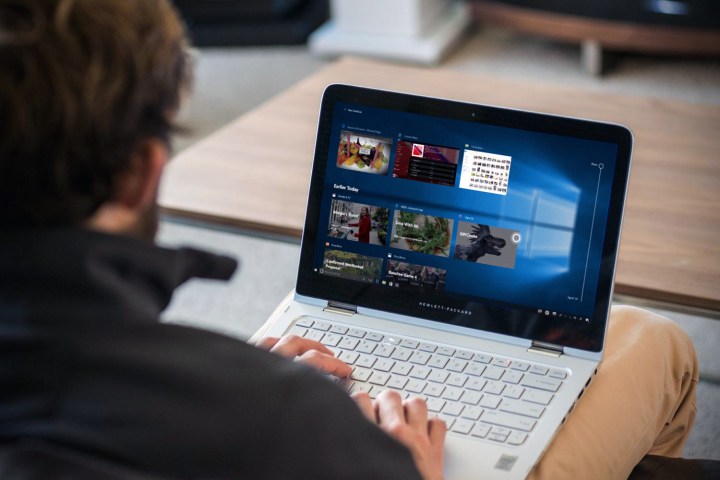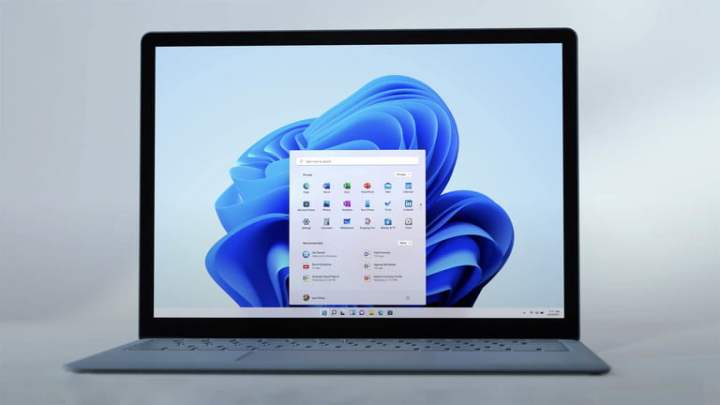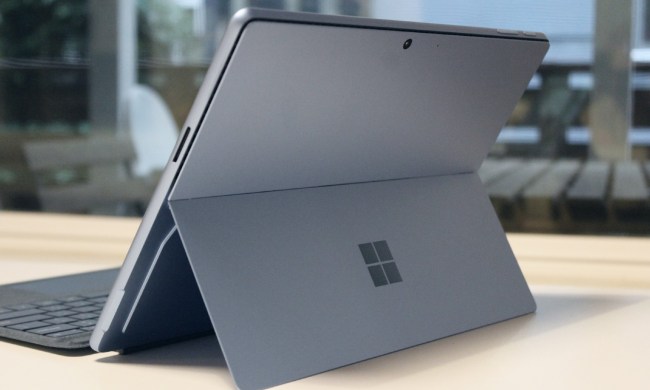Deciding on the right operating system can feel downright overwhelming. There are so many factors to consider when choosing an OS, and it often comes down to your personal preference for features, capabilities, user-friendliness, and price.
If deciding on the best OS has been nothing but a headache, look no further. We’ve rounded up the most vital information on the latest from Windows, Mac, and Chrome to make the process a breeze.
Windows 10 (and 11)
Microsoft’s Windows holds around 77% of the global desktop market share, with just shy of two-thirds of that being made up by Windows 10. If you throw in laptops, Windows 10 controls a full 40% of the entire global market, making it by far the most popular OS in the world for those sorts of devices. There are several reasons why that is, but the most important is the depth and breadth of its supporting hardware and software.
Because Microsoft sells Windows licenses to more or less any PC manufacturer to load on desktops, tablets, the best laptops, and everything in between, you can get a Windows machine at almost any size, shape, or price. Microsoft even sells Windows on its own, so consumers and businesses can manually load it onto their PC. That wide-open approach has let it conquer all competitors over the last few decades.
Because of its worldwide availability and longevity, Windows also boasts the biggest library of traditional software on the planet. Windows users don’t get every new application that comes on the market, but even those they don’t receive initially tend to come to Windows eventually. Consumer, media, enterprise, gaming, it doesn’t matter — if you want the most comprehensive array of capabilities, Windows is the way to go.
Moreover, the app library is now broader than in years past, and with the advent of Windows 11, the Microsoft Store is getting compatibility with Android apps while adding new support for a wider range of compatible software.
Works with everything

Windows boasts compatibility with the most extensive array of hardware, thanks to extensive driver support. That’s a significant consideration if you want to play graphically intense video games or work with high-powered software for media, video editing, or computer-aided design. There are some superpowered Macs as alternatives, but they tend to be far more expensive, and the breadth of hardware choice isn’t the same. Very few Chrome OS devices can even compete.
The Windows PC ecosystem also boasts a wide variety of shapes and sizes, more so now than in years past. There are the usual desktop and traditional clamshell notebooks, which are more powerful and higher in quality than ever. They range in price from just a few hundred dollars for entry-level options up to many thousands for premium machines. The 2-in-1 market has ballooned in recent years, too, most notably thanks to Microsoft’s own Surface range, which makes some of the best convertible laptops and tablets to date.
Though most accessories are universal since the introduction of the USB standard, Windows still technically boasts the most compatibility with third-party add-ons, too. Just about any mouse, keyboard, webcam, storage drive, graphics tablet, printer, scanner, microphone, monitor, or other doodads you care to add to your computer will work with Windows, which is something that can’t always be said for MacOS and is true to an even lesser extent for Chrome OS.
Rapid and meaningful updates

If you haven’t used Windows in a few years, then you may associate it with slow, tepid progress. That’s no longer true. With Windows 10, Microsoft committed to twice-a-year updates. We’ve seen these updates introduce new features, security improvements, and performance enhancements.
For those who want to access the cutting-edge, they can join the free Insider program, which puts out new updates almost every week. Insiders get access to fixes, tweaks, and major new features — and they do add up over time. Not only do Insiders get immediate access to the latest capabilities, but they also help shape the OS by providing ongoing feedback to Microsoft.
Over time, this rapid update policy has given Windows an edge over MacOS, which updates every year, usually with just one or two significant new features (with the exception of Big Sur). Chrome OS also updates quickly, but Google only rarely introduces major new features — which has slowed progress relative to Windows and MacOS.
The only downside to the rapid updates with Windows is that they can occasionally cause more problems than they fix. For instance, the October 2018 update deleted user data and caused all sorts of driver issues. It took months to fix and prompted Microsoft to change its update practice to be a little less ambitious in the future.
Compatibility problems and version confusion

With all that said, Windows isn’t perfect. The open nature of Microsoft’s relationship with desktop and laptop manufacturers means that two different machines, often with the same specifications, can and do perform very differently. Production quality can vary wildly, even within hardware from the same manufacturer. That makes choosing a new Windows PC a challenge. Research devices first to get the most for your money.
Windows also has the reputation of being less secure than MacOS and Chrome OS, simply because it’s the most-used desktop OS and thus the most targeted. Windows includes numerous Microsoft tools and safeguards to prevent and clean viruses and other threats, and third-party tools are also available. Therefore, Windows is much more secure than it once was despite remaining the most-attacked OS — it’s simply no longer quite the security risk it once was.
The wide variety of Windows hardware can cause problems as well. Windows’ complex driver system can cause system errors that force the user to diagnose and solve, and frequent updates from Microsoft might break software or devices that it hadn’t considered or anticipated. For that reason, Windows is more difficult to administer for the typical user, although the Windows update infrastructure does make things easier than they were in the old days of scouring the web looking for updates and new drivers.
Moving to Windows 11

Windows 11 isn’t out quite yet, but it’s slated for a full release in 2021, which means Windows 10 users will have to consider upgrading. But when you compare Windows 11 vs. Windows 10, The good news is that it isn’t changing too much functionally. Native apps have a friendlier, more streamlined interface on Windows 11, but are otherwise very familiar. More customization options are available, from where to place the Start to bringing back Windows Widgets, the mini-apps you can set up on your home screen to show all kinds of useful information.
Microsoft is also ditching some of the less popular features from Windows 10, such as Live Tiles. The Microsoft Store is receiving an update that will allow users to run Android apps with the Amazon App Store, and the company is pointedly allowing developers to maintain their own commerce engines, something that Apple has repeatedly refused to entertain.
Given this user-friendly optimization and the similarities to Windows 10, there’s little reason to not at least examine with Windows 11 when it becomes available — it appears to be a worthy upgrade for almost all users.
Is Windows for you?

Windows increasingly improved quality of life throughout Windows 10, and the trajectory looks similar for Windows 11 as well. The result is one of the most elegant and user-friendly versions of Windows that receives frequent feature updates.
The problem of complexity does remain, however. You will likely encounter more bugs with Windows than with MacOS and Chrome OS. But these bugs are rarely the fatal errors that used to drag Windows systems to a halt, and they’re balanced by features and hardware compatibility that is simply unavailable with Microsoft’s competition.
MacOS
One of Apple’s older promotional messages for Mac computers and their software was “it just works.” That philosophy is applied to more or less everything that the company sells, including laptops, desktops, and the associated MacOS software. Formerly called OS X, MacOS runs on all Apple computers, and buying an Apple machine is the only legitimate way to access it.
Because of this unique top-down approach to its products, Apple enjoys tighter control over MacOS than any of its current competitors. MacOS is designed to run on only a relatively small — and highly controlled — variety of computers and parts, compared to millions of possible combinations for Windows. That allows Apple to do more intense quality testing on its products, optimize software for only a few PC configurations, and provide targeted services that can diagnose and fix problems with much more speed and accuracy than Windows manufacturers.
For users who want a computer that “just works,” Macs are an appealing proposition.
It just works

The OS itself is designed to be easy to operate, even for novices. While the interface of Windows 10 is simple on its face, Microsoft’s OS has an infinitely deep layer of menus beneath. Troubleshooting can be bothersome and confusing.
New computer users often find MacOS to be more intuitive than Windows 10, though long-term Windows users may need some time to adjust to the interface. Some important features — like the MacOS file explorer, called Finder — are not as easy to understand.
Though the software market for MacOS is nowhere near as broad as Windows, it has its own expansive collection of cross-platform and bespoke apps. Apple includes a suite of in-house programs for basic tasks, and most popular third-party software, like Google’s Chrome browser, is available on MacOS. Microsoft even produces a version of its Office application suite for Apple hardware, and some of the best creative applications are available in superior versions for MacOS. It’s no surprise that MacOS is a popular option for design and media production, and many art-focused applications are available only on Mac, including Apple’s iconic Final Cut Pro video editing suite.
That said, MacOS is disadvantaged for gamers, as many new games are not immediately available on Apple’s platform. In 2021, more games are supporting Mac than ever before, and the new M1 chips are more gamer-friendly than previous processors, but it’s still a paltry list compared to Windows. For people who really love MacOS but still want to game, they can always leverage Apple’s Bootcamp application. This utility helps users prepare any Mac computer to run Windows instead of — or as a switchable option to — its built-in OS, allowing access to most Windows applications and capabilities.
This requires a separate Windows 10 license purchase, though it’s possible to run other operating systems, like Linux, on Bootcamp as well. (Windows machines can also boot Linux and other third-party operating systems, but MacOS cannot be licensed for use on non-Apple hardware.) Macs can even run Windows at the same time as MacOS through virtualization tools like Parallels or VMWare, offering even more flexibility for those who like the way MacOS operates but need access to some specific Windows software.
Better together

MacOS computers work in parallel with Apple’s mobile products, like the iPhone, iPad, and Apple Watch. Users who go all-in on Apple hardware for both desktop and mobile enjoy a unified design language, tools like Siri and Apple Pay that work with both devices, and cross-functionality through an Apple account for apps like iMessage. Apple’s Continuity function is perhaps the most exciting example of how well PC and mobile are integrated, with the ability to pick up where you left off in a document on any device and take phone calls and answer texts on your Mac.
Owners of the Apple Watch can even log in to the latest version of MacOS without a password. This synergistic approach simply doesn’t exist to nearly the same extent on Windows, although Microsoft is pushing Windows back into the mobile space with Android and incorporating some Windows 10 X features into Windows 11. While it’s technically possible to acquire many similar features on Windows with third-party tools, it’s much more difficult than using MacOS.
Limited options

Apple only offers a few product lines running MacOS, and that’s a problem for many. The hardware (especially storage) is often expensive yet not always up-to-date, and it may not fit your needs. There is no 17-inch MacBook, for example, and Macs don’t offer a touchscreen in any form save for the miniature Touch Bar on the MacBook Pro. In fact, unless you want to add a keyboard to your iPad, the 2-in-1 isn’t a thing at all in the MacOS world, leaving behind anyone who’d rather carry just one device compared to lugging around a notebook and a separate tablet.
Apple does have some high-end solutions, though, if you need real power. They’re expensive, but the likes of the iMac and iMac Pro are some of the most capable workstation desktops and all-in-ones in the world.
Apple’s desire to trend-set when it comes to style can often leave users with limited options elsewhere, too. It has been several years since Apple effectively ditched anything but USB-C Thunderbolt connectors, in some cases limiting devices to just one or two ports. That means using an adapter if you want to plug in legacy or multiple devices and accessories at once, especially if you’re charging at the same time.
Is MacOS for you?

Mac computers and MacOS are for users who want a premium, fine-tuned, maintenance-free desktop experience. Apple’s top-to-bottom philosophy makes its software relatively accessible to newcomers. It’s also a great pick for people who are dedicated to Apple’s mobile products.
However, Mac systems are expensive and often don’t offer hardware on par with Windows alternatives. The OS also lacks certain features that can be found on Windows, like touch support. You’ll need to commit yourself to USB-C or grab a few adapters if you’re interested in Apple’s MacBook line.
Read our coverage of MacOS Catalina
Chrome OS
Google’s approach to the world of desktop-class hardware is an interesting one. Chrome OS was originally designed as an OS that mostly relied on constant access to the internet — which made sense because it was designed as an extension of the Chrome desktop browser. Chrome hardware — usually called a “Chromebook” for laptops and sometimes a “Chromebox” for desktop designs — was intended for users who rely primarily on the web and only occasionally use more complex desktop software.
Today, Chrome OS feels more like an OS than a bloated browser. It packs an integrated file manager, a messaging app for sending and receiving texts via a linked Android phone (think iMessages), and more. It also supports both Google Play Android apps and Linux-based software. Users essentially get three platforms in one at a lower cost than a Windows PC or Mac.
It’s a web world

Because Chrome OS revolves around a web browser, it’s the least complex of the three major operating systems. Calling it a “browser in a box” isn’t the whole story, but it’s a good way to think about it. Though Chrome OS includes some basic desktop tools like a file manager and a photo viewer, its primary focus is content on the web. Android app compatibility does expand its capabilities significantly, but not all the apps scale well with a laptop or desktop display.
The interface is designed to get users to the web quickly and easily and to present as few barriers to internet content as possible. Anyone who uses the Chrome browser on a Windows or MacOS machine will be instantly comfortable with the interface, and all their saved history, bookmarks, and extensions will sync over.
Chrome devices excel at web browsing, streaming video and music, chatting and video conferencing, and other relatively simple web tasks. It can do anything that the Chrome browser on a desktop can do, including advanced Flash and Java applications. Chrome extensions and apps can change the interface and add extra functionality to a certain degree, but they lack the fine controls and more advanced “power user” options of Windows and MacOS.
That’s where Android app compatibility comes in, providing millions of new app options that greatly expand the Chrome OS experience. Support for Linux desktop programs, currently still in beta, builds on the Chrome OS ecosystem for users who prefer more powerful, traditional software over mobile and web-based applications.
Since Google designed the system to rely on Chrome, it’s understandably reliant on Google tools, to a greater degree than Windows relies on Microsoft software and MacOS relies on Apple software. That’s either a good or a bad thing, depending on how completely a user has bought into Google properties.
If you already use Gmail, Sheets, Drive, and other Google services, Chrome OS is a fantastic platform for better integrating those tools with your everyday tasks.
Cheap and easy

The focus on the web gives Chrome OS some dramatic advantages over Windows and MacOS. It can run comfortably on very low-power, inexpensive hardware. Laptops with cheap processors, tiny solid-state drives, and very little RAM can run Chrome OS easily, all with expansive storage in the cloud. Sometimes, these inexpensive designs run faster and more reliably than Windows and MacOS, even when the latter is used primarily for a browser anyway.
If you want the best Android app experience, particularly gaming, then you’ll want a fast processor, but you’re much less reliant on high-end components for a usable experience. Options for high-end Chromebooks are more expansive than they’ve ever been, even if they aren’t the focus of the range. The Pixelbook leads the way, but there are plenty of other great Chromebooks to choose from.
Whether you go high- or low-end, if you aren’t running intensive applications, Chrome OS is essentially the same experience on every single Chromebook and Chromebox. It doesn’t suffer from the “bloatware” problem that Windows has, even though Chrome OS devices are sold by third-party manufacturers like Dell, Samsung, and Toshiba. And the administration of such devices is easier, making Chrome OS popular in educational environments.
The combination of this all-in-one approach and low-power requirements means that Chromebooks can be extremely inexpensive, sometimes even less than $200. More expensive models offer high-resolution screens, backlit keyboards, fold-back touchscreens, and other fancy features, including the top-of-the-line Pixelbook 2-in-1 sold by Google itself, complete with touch and pen support.
Is Chrome OS for you?

Chrome OS originally offered virtually no compatibility with external software. Google is changing that dynamic by supporting mobile Android apps and traditional Linux-based software. Chromebooks won’t work with advanced accessories like USB monitors or complex gaming hardware — Google simply doesn’t provide the drivers. It can handle basic keyboards, mice, USB drives, and Bluetooth add-ons, but that’s about it.
Meanwhile, gaming on Chrome OS is one of the most meaningful beneficiaries of Android and Linux support. While you won’t be running the massive gaming titles available for Windows, and to a much lesser extent MacOS, there are at least hundreds of thousands of Android games that should run fairly well on newer Chromebooks and Chromeboxes. That’s a significant improvement over the early days of Chrome OS when gaming took a real back seat.
On the Linux front, you can install Steam along with any game you purchase that offers a Linux-based version. However, given that most Chromebooks offer lower-end specifications, storage, and GPU processing will be the limiting factor. Google’s own Stadia streaming service and Nvidia’s GeForce Now offer ways to play your favorites without those software and hardware limitations.
In short, Chrome OS is almost all web, all the time. If you’re a Windows or Mac user and you often find that the only app you’re using is a browser, or you’re okay with the huge ecosystem of simpler Android apps, then it’s worthy of consideration. But the almost complete lack of the most advanced third-party software is a deal-breaker for anyone who relies on a computer for more complex tasks.
If you conduct the vast majority of your business online, you’ll find Chrome OS incredibly appealing. Compared to competitors, it’s budget-friendly, easy to use, and designed with durability in mind. While it’s an excellent choice for students, it might fall short for users who need software to handle more complex tasks.
Verdict: Windows is the best all-rounder, at a price
Overall, Windows 10 delivers practical user design, competitive pricing, and the broadest hardware selection, making it the best all-around platform for most users. If you’re not entirely sure about what features you’ll need from your operating system, you can bet that Windows has everything you need. Windows 11 will shake things up in the future too, potentially bringing some of the aesthetic qualities and fluid animations of MacOS to the Windows experience.
Students, folks on a limited budget, and loyal Google users can’t go wrong with Chrome OS. Generally speaking, MacOS tends to be the best option for professionals who are comfortable paying extra for optimized hardware and software.



